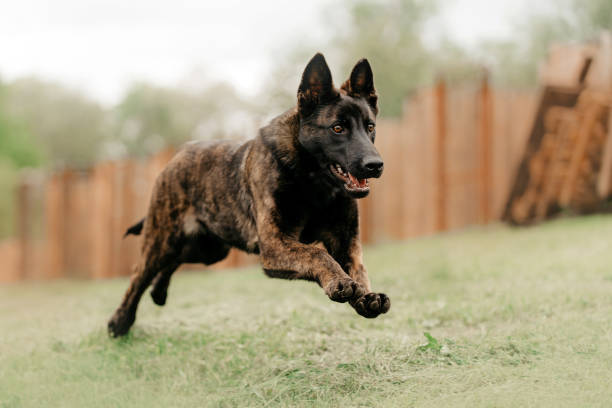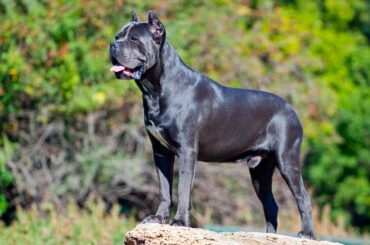Table of Contents
A Comprehensive Comparison of 2 Giant Breeds

Embarking on the journey of choosing the perfect canine companion can be both thrilling and challenging. For those seeking a loyal, intelligent, and versatile breed, the Dutch Shepherd vs Belgian Malinois stand out as compelling options. These two breeds share a rich history and a lineage deeply rooted in herding and protection roles. As you navigate the decision-making process, it becomes crucial to understand the nuanced differences between the Dutch Shepherd and the Belgian Malinois.
In this article, we will delve into the distinctive characteristics, temperaments, and functionalities of these breeds, providing you with valuable insights to help you make an informed decision about which one may best suit your lifestyle and preferences. Join us as we explore the fascinating world of the Dutch Shepherd vs the Belgian Malinois.
Dutch Shepherd vs Belgian Malinois Historical Roots
Dutch Shepherd
The Dutch Shepherd, known for its distinctive brindle coat and keen intelligence, originated in the Netherlands. Its history can be traced back several centuries, where it was primarily developed as a versatile herding dog. Dutch Shepherds were indispensable on farms, excelling in herding and managing livestock. Their agility, intelligence, and reliability made them valuable working companions for Dutch farmers.
The development of the Dutch Shepherd was a result of natural selection, as farmers selectively bred dogs that exhibited the desired traits for herding duties. The breed’s ability to work independently and make quick decisions in the field made it well-suited for the challenging and dynamic agricultural environments of the Netherlands.
Over time, as farming practices evolved, Dutch Shepherds adapted to various roles beyond herding. They found employment as guard dogs, watchful protectors of farms and families. Their versatility expanded to include roles in police work and search and rescue, owing to their sharp instincts and high train-ability.
Belgian Malinois
The Belgian Malinois, hailing from Belgium, shares its ancestry with three other Belgian Shepherd varieties. Developed in the late 19th century, the Malinois was specifically bred for herding and guarding livestock. Named after the Belgian city of Malines, these dogs were prized for their exceptional work ethic, intelligence, and agility.
Similar to the Dutch Shepherd, the Belgian Malinois underwent selective breeding to enhance its herding abilities. Belgian shepherds were highly valued by Belgian farmers for their proficiency in managing and protecting flocks. As industrialization and modernization altered the agricultural landscape, Belgian Malinois dogs transitioned into various roles due to their versatility.
During World War I, the Belgian Malinois gained international recognition for its service as a messenger and ambulance dog. This marked a turning point in the breed’s history, showcasing its adaptability and courage in challenging situations. The breed continued to evolve as a working dog, excelling in police work, search and rescue, and as military and protection dogs.
Dutch Shepherd vs Belgian Malinois: Size

Although these dogs are almost the same size, there are several differences in the breed criteria. Belgian Malinois dogs are 22 to 26 inches tall, and Dutch Shepherds are between 21 and 25 inches tall. Belgian Malinois dogs weigh 40 to 80 pounds, and Dutch Shepherds weigh 42 to 75 pounds.
Dutch Shepherd vs Belgian Malinois: Appearance
Dutch Shepherd vs Belgian Malinois are somewhat comparable breeds. They are leggier, have finer bones, and have a distinct head. Strong and well-muscled, these working dogs should be sleek and graceful rather than large and cumbersome. Their eyes and ears are dark, and their coat hues vary from rich fawn to mahogany.
All Dutch Shepherd coat colors are limited to brindle. Their mask need to be black. They have coats that can be short, long, or rough, and their look has occasionally been compared to that of wolves.
Dutch Shepherd vs Belgian Malinois: Temperament
Dutch Shepherds are an adaptable breed of dog that can be used for many purposes. Loyal, dependable, vigilant, attentive, energetic, independent, intellectual, and intuitive are a few of their character attributes. Like Malinois, they should be intelligent and obedient. They ought to be neither timid nor hostile. Due to their intelligence and willingness to obey, Dutch Shepherds are excellent service animals.
When meeting new people, Belgian Malinois should be assured but taciturn. The breed will exhibit a loving side and form a strong bond with their owners. Their innate tendency to defend their master and their property is arguably their most well-known trait. They shouldn’t be unduly combative, though. The fact that Belgian Malinois are extremely smart and docile won’t surprise you, considering that they are used as police and military dogs.
Dutch Shepherd vs Belgian Malinois: Barking Level
It is unlikely that Dutch Shepherd vs Belgian Malinois will bark excessively. The normal alert barking of a Dutch Shepherd will eventually stop, especially if it has received sufficient training. Dogs of the Belgian Malinois breed rarely bark.
Recall that these dogs are naturally protective and believe it is their duty to keep you informed about events in the area. Reprimand them for doing what their ancestors intended! Prior to taking any action about problematic barking, make sure your dog is getting enough exercise each day. The main factor causing behavioral problems is boredom!
Additionally, be sure you’re not abandoning them in the yard for extended periods of time. This results in the dog not receiving the required care, which causes boredom and frustration. If your dog barks while left inside by themselves, separation anxiety could be the cause.

Dutch Shepherd vs Belgian Malinois: Shedding
Dutch Shepherds also have a multipurpose double coat. It’s important to keep in mind that there are three types: short-hair, long-hair, and rough-hair. Their needs for grooming and shedding will differ. Typically, they will molt their coat in the spring and fall. Malinois will moderately shed their waterproof double coat over the year. At the change of the seasons, Belgian Malinois will blow out their coat twice a year.
Dutch Shepherd vs Belgian Malinois: Grooming
Although they can get by with an occasional brushing, it’s recommended to brush Dutch Shepherd vs Belgian Malinois once a week. This will maintain the health of their skin and hair and reduce the quantity of fur that sheds.
The type of coat a Dutch Shepherd has determines the different maintenance requirements. Grooming is necessary for tough hair once a month, long hair once a week, and short hair infrequently. Additionally, rough-haired dogs require manual stripping of their coat once a year.
Belgian Malinois dogs, short-haired Dutch Shepherds, and long-haired Shepherds will require daily brushing to keep up with their increased shed throughout the twice-yearly shedding season.
Dutch Shepherd vs Belgian Malinois: Exercise and Training
Dutch Shepherd vs Belgian Malinois activity and training requirements are strikingly similar. The fact that these breeds aren’t ideal for novices should not be overlooked.
They first demand a tremendous quantity of daily workout. They require high-impact exercise, such as outside play, running, or hiking; a stroll or two a day won’t do. These canines require cerebral stimulation to maintain their health and optimal behavior, as they are also highly intelligent. A bored dog will find several problems to solve.
Dutch Shepherd vs Belgian Malinois are also similar in the sense that they’ve been bred for hard work. The AKC says that these Dutch dogs can differentiate between work, play and chill time. Again, like Malinois, they want to serve a greater purpose than purely being a family pet. They need a lot of exercise, at least around 100 to 120 minutes a day.





